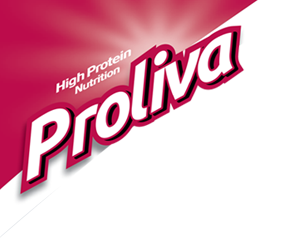-
Protein a vital part of your daily diet
07.03.2019Foods are categorized into two main categories: macronutrients and micronutrients.
Macronutrients are classified into three groups: carbohydrates, proteins and fats, which are needed in large amounts within the body.
Micronutrients are needed in smaller amounts and are categorized into two groups: vitamins and minerals.
Together, the macro and micro nutrients are needed each day through foods to optimize the body’s biological functioning. Carbohydrates, protein and fats all contain a variety of vitamins and minerals, which is why eating a balanced and varied diet is ideal to get a good mixture of nutrients.
While much could be said about all of these nutrients and the vital roles they play in life, today’s focus will be on protein. The Greek word for protein is proteos , meaning “primary” or “taking the first place,” highlighting its importance as a nutrient.
Protein is essential for life and is found throughout the body, largely in skeletal muscle (approximately 40 percent), body organs (25 percent) and within the skin, tissues and blood. Protein assists the body in growth, development and repair, and it is essential throughout the entire lifespan, from conception to old age. During times of healing, such as after surgery, injury or trauma, the body has an incredibly high demand for protein to heal and repair the body’s tissues, skin, muscles and organs.
This is also why there is a higher demand for protein during pregnancy. It helps sustain a mother, and it develops the growing fetus(es). The body’s protein needs are also slightly higher when strength training in order to accommodate the growth and development of muscle tissue.
Protein is a satiating nutrient, taking longer for the body to digest than carbohydrates but shorter than the digestion of fats. And when talking about weight maintenance and weight loss, protein is essential, because it helps keep the stomach fuller longer and provides a more sustained energy source. Incorporating protein-rich foods throughout the day in meals and snacks will help keep energy levels up, hunger levels low and cravings to the curb. Aim for three to four ounces of protein (18 to 24 grams protein) at each meal, and aim for one to two ounces of protein (six to 14 grams protein) at snack times. Although individual protein needs vary, a general guideline for daily protein intake is 60-80 grams per day for healthy adults.
Meat/animal products are the most bioavailable sources of protein to the body. When the body breaks down animal-based proteins (eggs, poultry, fish, beef, pork, dairy), a high portion of the protein from the food is retained during digestion and therefore is able to be used by the body.
When nonmeat proteins (nuts, beans, legumes, soy, split peas, whole grains, for example) are digested, the retention of protein is not quite as high as when consuming animal-based proteins. To get an equivalent amount of protein, a larger portion of nonanimal protein foods would need to be consumed in order to account for the lower amount of protein that is retained after digestion.
Do not be fooled! Nonmeat proteins are incredibly nutritious, often high in fiber and very low in fat, and they make great heart-healthy and waist-friendly additions to meals and snacks. It might be helpful to branch out and try new ways to add protein to your day. Organizing “Meatless Mondays” in the home can be a unique way to get creative with trying new non-animal protein sources with the family.
Making sure to include an adequate serving of a healthy protein choice at meal and snack times can help you feel more satisfied with sustained energy throughout the day.
For a quick guide for protein amounts, scan below for both animal and non-animal based proteins to add to meals and snacks.
Animal sources of protein:
>> Steak: 7 g per 1 oz.
>> Chicken: 9 g per 1 oz.
>> Ground turkey: 8 g per 1 oz.
>> 1 large egg: 6 g
>> Salmon: 6 g per 1 oz.
>> Pork loin: 8 g per 1 oz.
>> 8 oz. skim milk: 8 g per 8 oz.
>> Cheese: 7 g per 1 oz. (1 oz. = serving size)
Non-animal sources of protein:
>> Beans: 7 g per ½ cup
>> Garbanzo beans (chickpeas): 6 g per ½ cup
>> Quinoa: 6 g per ¼ cup
>> Lentils, cooked: 12 g per ½ cup
>> Split peas, cooked: 8 g per ½ cup
>> Oatmeal, cooked: 6 g per 1 cup
>> Nuts: varies
* Almonds: 7.5 g per ¼ cup
* Cashews: 5 g per 1 oz.
* Peanuts: 9.5 g per ¼ cup
* Pistachios: 6g per 1 oz.
* Soy nut: 7 g per 2 tbsp
* Walnuts: 4 g per 1 oz.
* Nut butters: 7 g per 2 tablespoons (almond butter) 8 g per 2 tablespoon (peanut butter)
* Sunflower butter: 6 g per 2 tablespoon
>> Tofu: 10 g per ½ cup
>> Soy protein: 23 g per 1 oz. (powder)
>> Soy milk: 7 g per 8 oz.
>> Almond milk: 1 g per 8 oz.
>> Soy nuts: 17g per ¼ cup
>> Soy yogurt: varies, ~6g per 6 oz.
Quick ways to add protein to snacks:
>> 6 oz. Greek yogurt: 17 g
>> 2 oz. tuna salad: 9 g
>> 2 tablespoon peanut butter: 8 g
>> ¼ cup almonds: 6 g
>> ½ cup black beans: 7 g
Source: https://www.scnow.com/living/food/article_6c8f7272-3fb3-11e9-b7f8-9fa119600e90.html
Latest Blog Post
- Sugary Drinks Linked to a Higher Cancer Risk
- The Latest Research on Protein and Muscle-Building
- 27 Health and Nutrition Tips That Are Actually Evidence-Based
- Tall order: More to good growth in toddlers than just measurements
- Millions of cardiovascular deaths attributed to not eating enough fruits and vegetables

